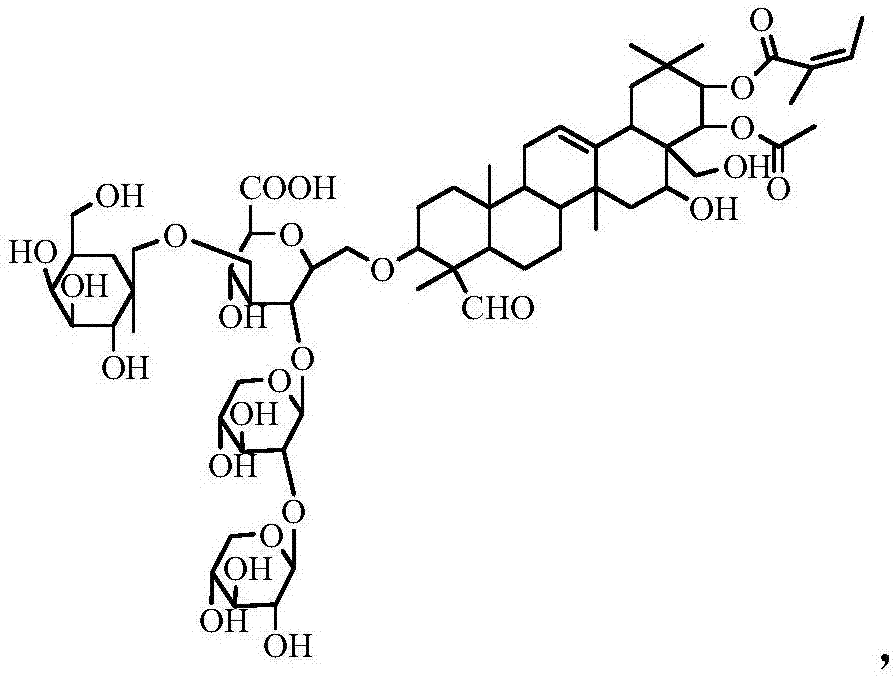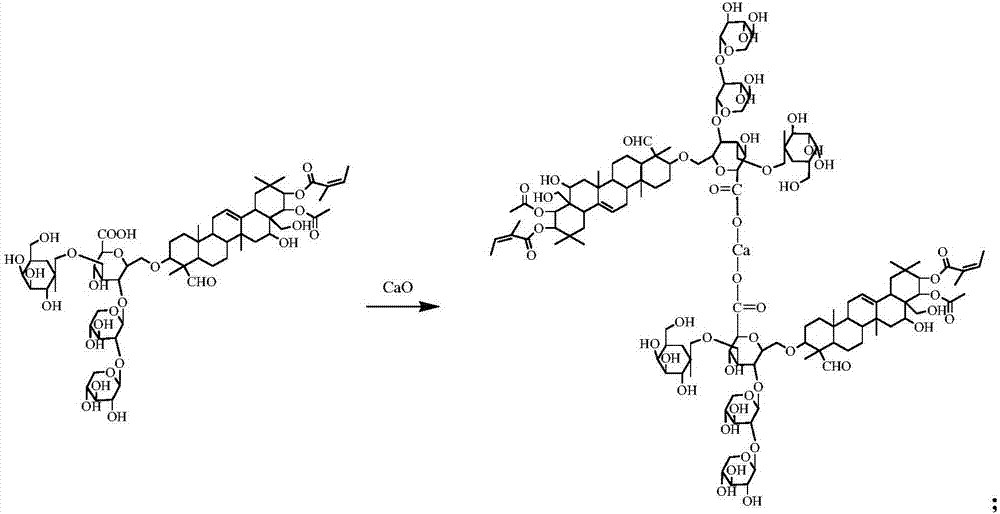Tea saponin modified blast furnace slag and composite floor brick prepared from tea saponin modified blast furnace slag and waste plastic
A technology for waste plastics and tea saponin, which is used in construction, building structure, floor and other directions, can solve the problems of poor compatibility between two phases, high price, complicated production process, etc., achieve good dispersion performance, increase the number of filling parts , the effect of improving the binding
- Summary
- Abstract
- Description
- Claims
- Application Information
AI Technical Summary
Problems solved by technology
Method used
Image
Examples
Embodiment 1
[0048] Make tea saponin modified blast furnace slag according to the following steps:
[0049] Add 93Kg of blast furnace slag and 7Kg of tea saponin into a high-speed mixer at 70°C, and stir for 7 to 9 minutes to obtain tea saponin-modified blast furnace slag.
[0050] Follow the steps below to make composite floor tiles:
[0051] a. After cleaning 150Kg of waste polyoxymethylene plastics, dry them at 135°C for 1.2 hours, and then crush them to less than 5mm to obtain product A;
[0052] B, A product and 850Kg tea saponin modified blast furnace slag are stirred evenly with a high-speed mixer to obtain product B;
[0053] c. Put product B on a three-roller mill to form a sheet at a temperature of 200-210°C and a sheet thickness of 0.5-0.8mm, and then send it to a hot press for molding at a temperature of 170°C-180°C and a pressure of 4.0 MPa, the time is 5 to 8 minutes, and the C product is obtained;
[0054] d. Cut product C into pieces according to the standard size of 300mm...
Embodiment 2
[0077] Make tea saponin modified blast furnace slag according to the following steps:
[0078] Add 90Kg of blast furnace slag and 10Kg of tea saponin into a high-speed mixer at 70°C, and stir for 7 to 9 minutes to obtain tea saponin-modified blast furnace slag.
[0079] Follow the steps below to make composite floor tiles:
[0080] a. After cleaning 180Kg of waste polyoxymethylene plastic, dry it at 135°C for 1.2h, and then crush it to less than 5mm to obtain product A;
[0081] B, A product and 820Kg tea saponin modified blast furnace slag are stirred evenly with a high-speed mixer to obtain B product;
[0082] c. Put product B on a three-roller mill to form a sheet at a temperature of 200-210°C and a sheet thickness of 0.5-0.8mm, and then send it to a hot press for molding at a temperature of 170°C-180°C and a pressure of 4.0 MPa, the time is 5 to 8 minutes, and the C product is obtained;
[0083] d. Cut product C into pieces according to the standard size of 300mm in len...
Embodiment 3
[0106] Make tea saponin modified blast furnace slag according to the following steps:
[0107] Add 88Kg of blast furnace slag and 12Kg of tea saponin into a high-speed mixer at 70°C and stir for 7 to 9 minutes to obtain tea saponin-modified blast furnace slag.
[0108] Follow the steps below to make composite floor tiles:
[0109] a. After cleaning 200Kg of waste polyoxymethylene plastic, dry it at 135°C for 1.2h, and then crush it to less than 5mm to obtain product A;
[0110] B, A product and 800Kg tea saponin modified blast furnace slag are stirred evenly with a high-speed mixer to obtain product B;
[0111] c. Put product B on a three-roller mill to form a sheet at a temperature of 200-210°C and a sheet thickness of 0.5-0.8mm, and then send it to a hot press for molding at a temperature of 170°C-180°C and a pressure of 4.0 MPa, the time is 5 to 8 minutes, and the C product is obtained;
[0112] d. Cut product C into pieces according to the standard size of 300mm in leng...
PUM
| Property | Measurement | Unit |
|---|---|---|
| particle diameter | aaaaa | aaaaa |
Abstract
Description
Claims
Application Information
 Login to View More
Login to View More - R&D
- Intellectual Property
- Life Sciences
- Materials
- Tech Scout
- Unparalleled Data Quality
- Higher Quality Content
- 60% Fewer Hallucinations
Browse by: Latest US Patents, China's latest patents, Technical Efficacy Thesaurus, Application Domain, Technology Topic, Popular Technical Reports.
© 2025 PatSnap. All rights reserved.Legal|Privacy policy|Modern Slavery Act Transparency Statement|Sitemap|About US| Contact US: help@patsnap.com



